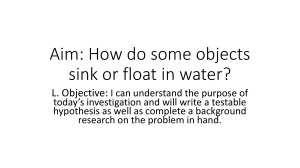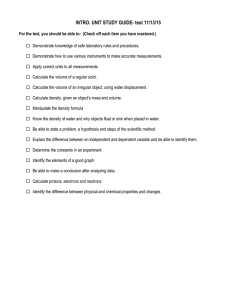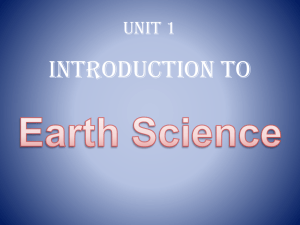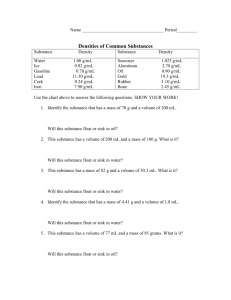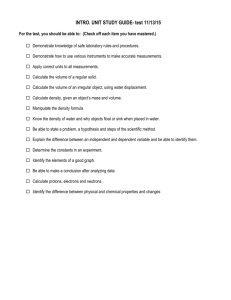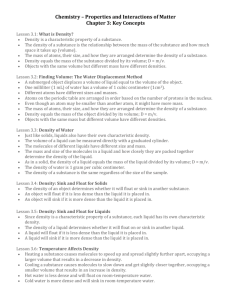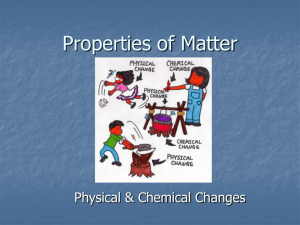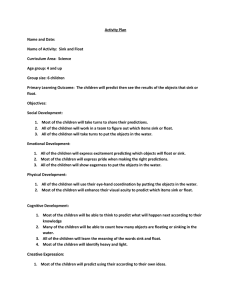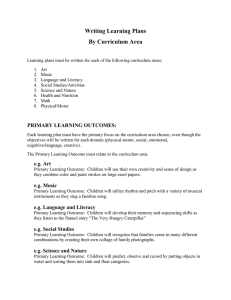Sink or Float
advertisement
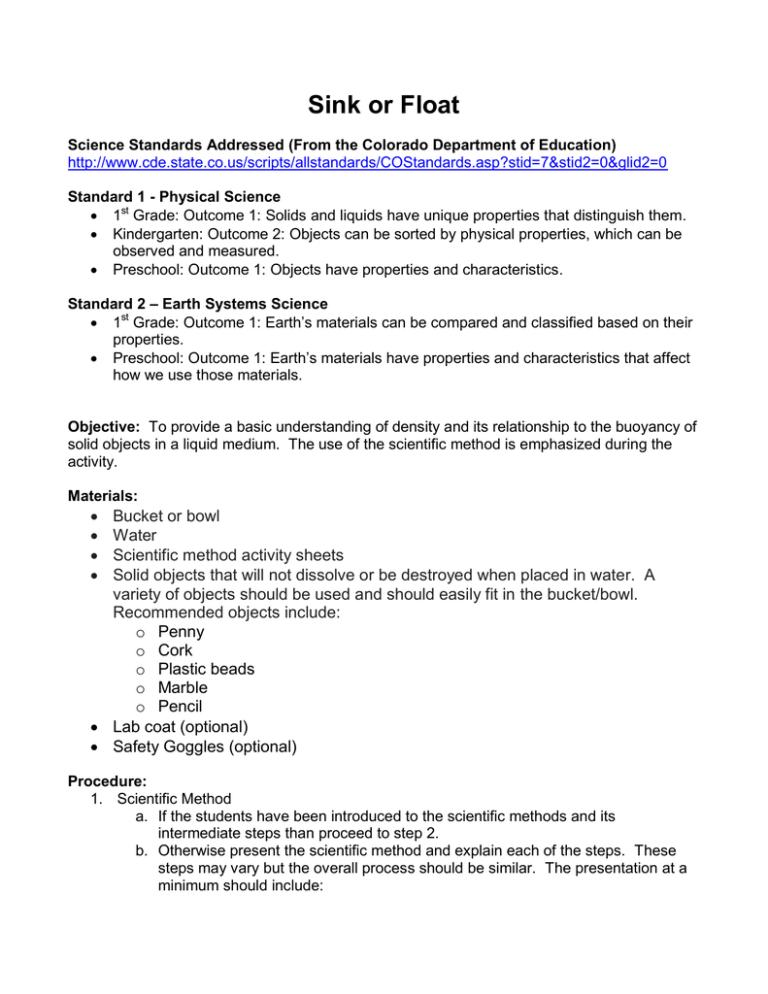
Sink or Float Science Standards Addressed (From the Colorado Department of Education) http://www.cde.state.co.us/scripts/allstandards/COStandards.asp?stid=7&stid2=0&glid2=0 Standard 1 - Physical Science 1st Grade: Outcome 1: Solids and liquids have unique properties that distinguish them. Kindergarten: Outcome 2: Objects can be sorted by physical properties, which can be observed and measured. Preschool: Outcome 1: Objects have properties and characteristics. Standard 2 – Earth Systems Science 1st Grade: Outcome 1: Earth’s materials can be compared and classified based on their properties. Preschool: Outcome 1: Earth’s materials have properties and characteristics that affect how we use those materials. Objective: To provide a basic understanding of density and its relationship to the buoyancy of solid objects in a liquid medium. The use of the scientific method is emphasized during the activity. Materials: Bucket or bowl Water Scientific method activity sheets Solid objects that will not dissolve or be destroyed when placed in water. A variety of objects should be used and should easily fit in the bucket/bowl. Recommended objects include: o Penny o Cork o Plastic beads o Marble o Pencil Lab coat (optional) Safety Goggles (optional) Procedure: 1. Scientific Method a. If the students have been introduced to the scientific methods and its intermediate steps than proceed to step 2. b. Otherwise present the scientific method and explain each of the steps. These steps may vary but the overall process should be similar. The presentation at a minimum should include: i. ii. iii. iv. v. vi. Purpose Research Hypothesis Experiment Analyze results Conclusion 2. Purpose a. The purpose of this activity is to determine whether objects will sink or float when placed in water. 3. Research a. Explain the property of density and provide examples of some items that are more or less dense relative to one another. b. Explain how the density of water determines whether an object will sink or float in water. 4. Hypothesis a. Hand-out the worksheets to the class. Have them guess whether each object will sink or float when placed in water. 5. Experiment a. In front of the classroom test each object in the water container. A clear container is best, allowing the students to visually participate. b. Allow the students to be the scientists and invite one at a time to come forward and drop the objects in the water. i. Allowing the students to wear the lab coat and safety goggles may get them excited to participate. It also helps teach them about lab safety. c. Test each object a minimum of two times. Emphasize the importance of repetition in scientific research. 6. Analysis a. After testing all objects have the students determine which of their guesses were correct and which ones were wrong. Explain that it is not important whether their hypothesis was right or wrong. The important part of research is to find the answer, not guess the answer. 7. Conclusion a. Based on the results of the experiment have the students list the objects in two categories; Objects more dense than water & Objects less dense than water. Prepared By: Matthew Musselman Developed with: Emily Pitman, Cindy Stroschein References: Colorado Department of Education – Colorado Science Standards
